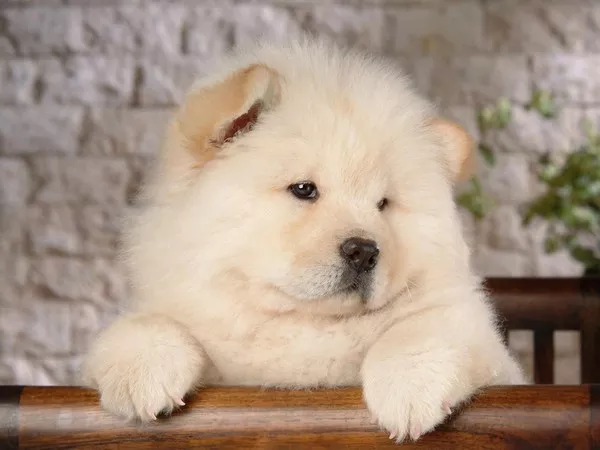Chow Chows are a unique and beautiful breed known for their distinctive appearance, including their deep-set eyes and heavy facial folds. These characteristics, while charming, can make Chow Chows prone to eye issues. Regular cleaning and care of their eyes are essential to prevent infections and ensure their overall well-being. In this article, we will explore the best practices for cleaning Chow Chow eyes, addressing common problems, and providing tips for maintaining healthy eyes in this beloved breed.
Understanding Chow Chow Eye Anatomy
Deep-set eyes and facial folds
Chow Chows have deep-set eyes surrounded by heavy fur and skin folds. These folds can trap dirt, debris, and moisture, creating an environment conducive to bacterial growth and eye infections.
Common eye issues in Chow Chows
Due to their unique anatomy, Chow Chows are prone to several eye problems, including:
- Entropion: A condition where the eyelid rolls inward, causing the eyelashes to rub against the eye surface, leading to irritation and potential damage.
- Ectropion: A condition where the eyelid rolls outward, exposing the inner eyelid and leading to dryness and irritation.
- Tear staining: Excessive tearing can cause staining of the fur around the eyes, often due to blocked tear ducts or allergies.
- Conjunctivitis: Inflammation of the conjunctiva, the tissue lining the eyelids, which can result from bacterial or viral infections, allergies, or irritants.
Daily Eye Cleaning Routine
Preparing for cleaning
Before cleaning your Chow Chow‘s eyes, gather the necessary supplies:
- Sterile saline solution or a veterinarian-recommended eye cleaning solution.
- Clean, soft cotton pads or gauze.
- A clean towel.
Ensure your hands are clean to prevent introducing any bacteria to your dog‘s eyes.
Step-by-step cleaning process
- Calm your dog: Make sure your Chow Chow is calm and comfortable. Use treats and soothing words to help them relax.
- Inspect the eyes: Check for any signs of redness, discharge, or swelling. If you notice any abnormalities, consult your veterinarian before proceeding.
- Dampen the cotton pad: Moisten a cotton pad or gauze with the saline solution or eye cleaning solution.
- Wipe the eyes: Gently wipe around the eyes, starting from the inner corner (near the nose) and moving outward. Use a new cotton pad for each eye to prevent cross-contamination.
- Dry the area: Use a clean towel to gently pat the area dry, removing any remaining moisture.
Frequency of cleaning
Daily cleaning is recommended to prevent the buildup of dirt and debris. However, some Chow Chows may require more frequent cleaning, especially if they are prone to tear staining or have existing eye conditions.
Addressing Tear Staining
Causes of tear staining
Tear staining can result from various factors, including:
- Blocked tear ducts
- Allergies
- Infections
- Poor diet
Preventive measures
- Diet: Ensure your Chow Chow is on a high-quality, balanced diet. Avoid foods with artificial colors and additives, which can contribute to tear staining.
- Regular grooming: Keep the fur around the eyes trimmed to prevent it from irritating the eyes and trapping moisture.
- Hydration: Ensure your dog has access to fresh water at all times to maintain proper hydration, which can reduce tear production.
Cleaning tear stains
- Use a tear stain remover: There are several tear stain removal products available specifically designed for dogs. Follow the product instructions carefully.
- Natural remedies: Some natural remedies, such as chamomile tea or diluted apple cider vinegar, can help reduce tear staining. Consult your veterinarian before using any home remedies.
- Regular cleaning: Incorporate tear stain cleaning into your daily eye cleaning routine to prevent buildup.
Dealing with Common Eye Problems
Entropion
If your Chow Chow is diagnosed with entropion, your veterinarian may recommend surgery to correct the eyelid position. Post-surgery, follow your vet’s instructions for eye care and medication.
Ectropion
For ectropion, your vet may suggest lubricating eye drops to keep the eyes moist and prevent dryness. In severe cases, surgery may be required.
Conjunctivitis
Treatment for conjunctivitis depends on the underlying cause. Bacterial infections typically require antibiotic eye drops, while viral infections may resolve on their own. Allergic conjunctivitis can be managed with antihistamines or anti-inflammatory medications.
When to Consult a Veterinarian
Signs of eye infections
- Redness
- Swelling
- Discharge (yellow or green)
- Excessive tearing
- Squinting or rubbing the eyes
If you notice any of these signs, seek veterinary care promptly.
Regular check-ups
Regular veterinary check-ups are crucial for maintaining your Chow Chow’s eye health. Your vet can detect early signs of eye problems and provide appropriate treatment.
Tips for Maintaining Healthy Eyes
Balanced diet
A balanced diet rich in vitamins and minerals supports overall eye health. Omega-3 fatty acids, found in fish oil, can help reduce inflammation and promote healthy tear production.
Regular grooming
Regular grooming, including trimming the fur around the eyes, helps prevent irritation and reduces the risk of infections.
Eye protection
When taking your Chow Chow outdoors, especially in windy or dusty conditions, consider using dog goggles to protect their eyes from debris and irritants.
See also: Do Hairless Dogs Need Baths?
Conclusion
Caring for your Chow Chow’s eyes is an essential aspect of their overall health and well-being. Regular cleaning, preventive measures, and prompt veterinary care can help prevent eye problems and ensure your furry friend remains happy and healthy. By following the guidelines outlined in this article, you can provide the best possible care for your Chow Chow’s eyes and enjoy many years of companionship with your beloved pet.


